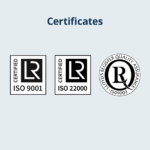Synthetic Anhydrous 99%
Ethanol
Synthetic ethanol is manufactured through a complex three stage process that ultimately produces a single grade of ethanol (DRAA – Double Rectified Absolute Alcohol) which is 99% pure. This is an ideal product for use in specialist applications that depend on superior, high quality product.
What is Synthetic Anhydrous 99%?
Ethanol (ethyl alcohol) is a colourless, flammable liquid with a characteristic odour. Ethanol can either be produced synthetically from ethylene, a feedstock which is extracted from crude oil or natural gas, or through fermentation from sugars derived from plants or other agricultural or non-agricultural products. Ethanol produced synthetically from ethylene is chemically identical to ethanol produced by fermentation. Both processes result in an ethanol-water based product. However, ethanol produced through the fermentation process contains various impurities which have to be additionally removed in order to achieve the same grades and the same purity as with synthetic ethanol. There are three main types of ethanol according to its commercial application: fuel ethanol, potable ethanol and industrial ethanol. Industrial ethanol can be both synthetic and fermentation ethanol, with the latter accounting for 60-70% of the industrial ethanol.
The remainder of industrial ethanol demand is met by synthetic ethanol, which is not used as potable or fuel ethanol. Industrial ethanol is produced in two main grades: hydrous ethanol (96% purity) and anhydrous ethanol (99% purity). Typically, hydrous ethanol contains not less than 95.1% and not more than 96.9% ethanol. Anhydrous ethanol contains not less than 99.5% ethanol, and up to 99.9%. Within the industrial ethanol category there is a range of different end uses: anhydrous ethanol is a higher quality grade and once it has been “finished”, it contains fewer impurities. It can thus be used in applications such as pharmaceuticals, cosmetics and inks. The lower “unfinished” 96% ethanol is used for applications, where the content of ethanol and/or impurities is less stringent: automotive screen wash, paints, inks, dyes and cosmetics.
In recent years, both the quality and consistency of ethanol produced from agricultural feedstock has improved leading to increased substitutability with synthetic ethanol. A number of major fermentation ethanol producers produce industrial ethanol, including anhydrous ethanol with 99% purity.
Applications and Use
Synthetic Anhydrous 99% can be used in applications such as pharmaceuticals, cosmetics and inks. The lower “unfinished” 96% ethanol is used for applications, where the content of ethanol and/or impurities is less stringent: automotive screen wash, paints, inks, dyes and cosmetics.


